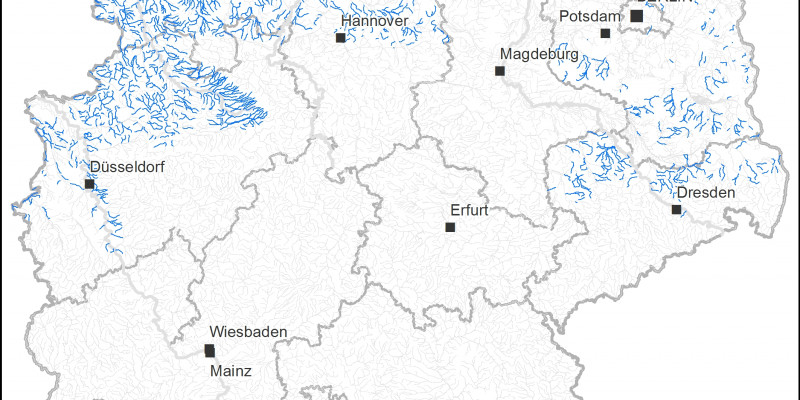Sandy lowland river: Water Type of the Year 2018
Only three per cent of streams have 'good' status
 Click to enlarge
Click to enlargeSource: Jörg Schönfelder
The German Environment Agency (UBA) has named the sandy lowland river the Water Type of the Year 2018 on the occasion of World Water Day (22 March). The course of these streams is often straightened, changed and deepened to drain their floodplains and make them usable for agriculture. As a result, only 30 per cent of sandy lowland rivers can still be classified as “natural”, and only three per cent have 'good' ecological status. Sandy lowland rivers are valuable habitats for a large number of species. Typical residents include the gudgeon, a small fish once in high demand as food, and the beaver. The thick shelled river mussel nestles between watercress and the roots of alder trees. Once widespread, this mussel is now on the Red List of Threatened Species. The Water Type of the Year 2018 is therefore an example of a body of water which has still not achieved 'good' ecological status across the board and requires improved protection. These are the conclusions of two new studies by the German Environment Agency on the condition of water bodies in Germany: “Waters in Germany: Status and Assessment” and "Wasserwirtschaft in Deutschland" (in German).


